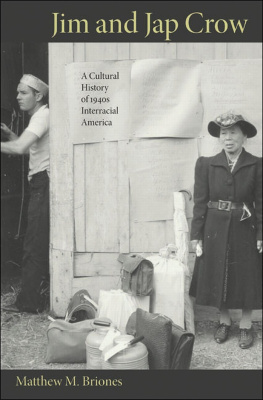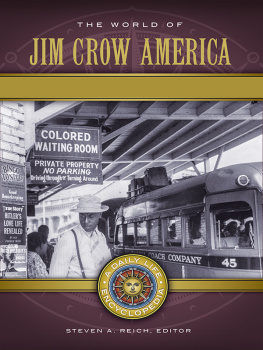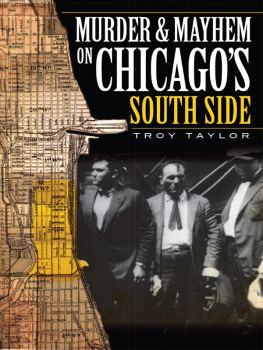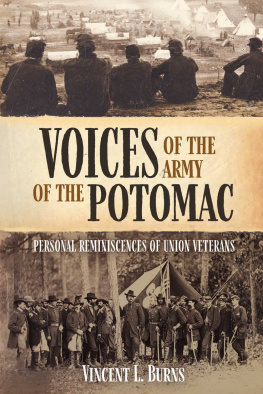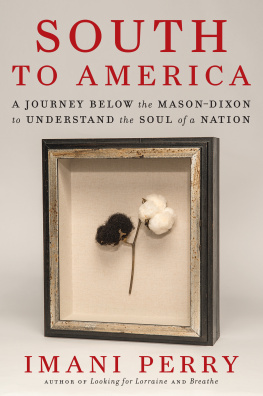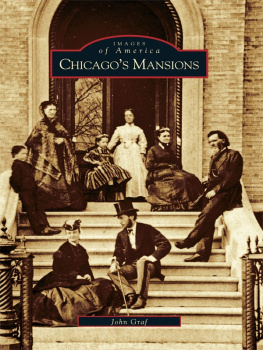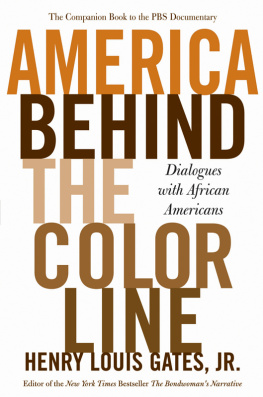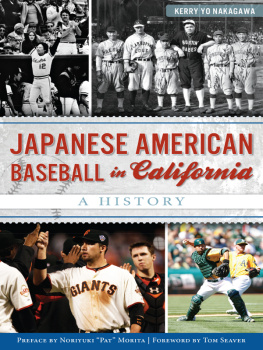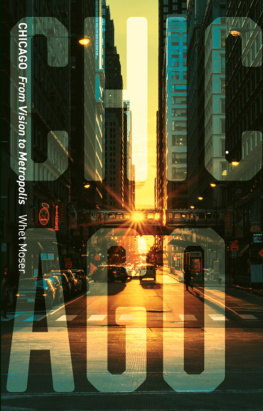Jim and Jap Crow
Jim and Jap Crow
A Cultural History of 1940s Interracial America
Matthew M. Briones
PRINCETON UNIVERSITY PRESS
Princeton and Oxford
Copyright 2012 by Princeton University Press
Published by Princeton University Press, 41 William Street, Princeton, New Jersey 08540
In the United Kingdom: Princeton University Press, 6 Oxford Street, Woodstock,
Oxfordshire OX 201 TW
press.princeton.edu
Jacket photograph: Evacuee stands by her baggage. Centerville, CA, May 1942; by Dorothea Lange. Courtesy of The Bancroft Library, University of California, Berkeley
All Rights Reserved
Library of Congress Cataloging-in-Publication Data
Briones, Matthew M., 1972
Jim and Jap Crow : a cultural history of 1940s interracial America / Matthew M. Briones.
p. cm.
Includes index.
ISBN 978-0-691-12948-8 (cloth : acid-free paper) 1. Kikuchi, Charles. Kikuchi diary.
2. Japanese AmericansEvacuation and relocation, 19421945. 3. Tanforan Assembly Center
(San Bruno, Calif.) 4. Japanese AmericansCaliforniaBiography. 5. United StatesRace
relationsHistory20th century. 6. Race discriminationUnited StatesHistory20th
century. 7. Japanese AmericansSocial conditions20th century. 8. African Americans
Social conditionsTo 1964. I. Kikuchi, Charles. II. Title.
D769.8.A6K543 2012
305.8956073092--dc23
[B] 2011026320
British Library Cataloging-in-Publication Data is available
This book has been composed in Minion
Printed on acid-free paper.
Printed in the United States of America
10 9 8 7 6 5 4 3 2 1
Contents
Introduction
An Age of Possibility
Chapter 1
Before Pearl Harbor: Taking the Measure of a Marginal Man
Chapter 2
A Multitude of Complexes: Finding Common Ground
with Louis Adamic
Chapter 3
Unity within Diversity: Intimacies and Public Discourses of Race and Ethnicity
Chapter 4
Participating and Observing: Dorothy Swaine Thomas, W. I. Thomas,
and JERS
Chapter 5
The Tanforan and Gila Diaries: Becoming Nikkei
Chapter 6
From Jap Crow to Jim and Jane Crow: Black and Blue (and Yellow)
in Chicago and the Bay Area
Chapter 7
It Could Just as Well Be Me: Japanese American and African American GIs in the Army Diary
Conclusion
Tatsuro, Standing Man
Acknowledgments
The story I have chosen to share is ultimately about one mans quest to find a family, whether it be biological, surrogate, or, more broadly, American. In the course of researching and writing this history, I myself have been fortunate enough to benefit from the advice and support of many family members, both surrogate and immediate. I would like to thank my remarkably patient, reassuring, and talented editor, Hanne Winarsky, who has lent so much time and effort to this project, instilling the requisite confidence in me to bring my book to fruition; production editor Ellen Foos, for her steady oversight of the mechanics of its publication; two anonymous readers, for insightful advice that vastly improved this final version; copy editor extraordinaire Kip Keller, for his yeomanlike revision; and Thomas Broughton-Willet, for his precise indexing. My deepest gratitude, however, extends to Princeton University Press and its editorial board for supporting the manuscript and adding it to the Presss prestigious collection.
I am infinitely grateful to my primary dissertation advisor, Werner Sollors. Ever since I was a doe-eyed undergraduate in his Afro-Am seminar about twenty years ago, he has continually inspired, challenged, and cheered me. Without his encouragement, I surely would not have attended graduate school; without his belief in me, I would not have ever entered the profession. He has been my true mentor and friend. I am additionally indebted to Akira Iriye for his eminently wise and generous counsel. I came to him seeking help at the eleventh hour, but he has never wavered in treating me as if I had been one of his advisees all along: his grace and class will not soon be lost on me. I would also like to express my warmest thanks to John Stauffer, whose enthusiasm about my subject and limitless generosity have provided further proof of the master scholar-teacher we know him to be.
Cornel West has quite simply kept my spirit alive this past decade. From Cambridge to Princeton to Chicago, he has continually been a true brother to me, having more faith in me than I ever could myself. He is, first and foremost, the consummate teacher, and someone who not only preaches the love ethic but also practices it with every fiber of his body. He has taught me to see the person behind the scholarly mask, and in my darkest of days, he singularly revives my sagging spirit. When my mom was dying, Cornel propped me up: truth-telling bluesman in good or bad times. As is the case with all of my advisors, I can only hope to be a fraction of the man he is.
Reed Ueda of Tufts consistently went out of his way on my behalf, and I will always be especially grateful for his encouragement to pursue this particular project in late 2001. From 2002 to 2005, Gary Y. Okihiro kindly gave me the memorable opportunity to research and teach at the Center for the Study of Ethnicity and Race at Columbia University. Gary has not only taught me what it means to be a historian of Asian America, but also shown me what it takes to be a genuine friend in the academy.
Likewise, so many thoughtful men and women have aided both the project and its author the past decade: Arthur Hansen, who spent hours sharing his knowledge and resources with me, and with whom I could spend endless more hours conversing; John Modell, who entrusted me with years worth of his collected archive on Charlie and who graciously passed the baton to keep telling his story; Brett Flehinger, who first introduced me to the Kikuchi diary; Jack Salzman, who provided two wonderful chances to publish in his critical annual, Prospects, but who, more importantly, always had the time to talk shop in a Lexington Avenue diner; Greg Robinson, who invested precious time in my project; my brothers and sisters at Harvard, such as Martha Nadell, Suleiman Osman, Hua Hsu, Salamishah Tillet, Dagmawi Woubshet, and Judy Kertesz; and the brilliant quartet of women in my dissertation writing group at ColumbiaAmy Rasmussen, Susie Pak, Kathy Lopez, and Alia Yap. The magnanimous Tavis Smiley has been of immeasurable support through his publishing arm, but even more so through his warm friendship.
I owe many thanks to a number of scholars who generously took the time to read through drafts of this manuscript or offered indispensable advice along the way: Lane Ryo Hirabayashi, Paul Spickard, Dana Takagi, Evelyn Brooks Higginbotham, David Levering Lewis, Ann Holder, Moon-Ho Jung, Cheryl Greenberg, Todd Vogel, Arif Dirlik, Mary Yu Danico, Linda Vo, Steve Biel, the late William Gienapp, Thomas Underwood, Craig Wilder, John Ibson, Henry Yu, Jim Lee, Kariann Yokota, King-Kok Cheung, Robert Stepto, Bryan Wolf, Harriet Chessman, Shigeo Hirano, Richard So, Julie Reuben, Yunte Huang, David D. Hall, Henry Louis Gates, Jr., Laurel Thatcher Ulrich, Ada Savin, James A. Miller, Melani McAlister, and Joe Weixlmann. I was equally fortunate during this time to interview a historic triumvirate of writers who inspired the journey: I am thus endlessly thankful to Jessica Hagedorn, Yuri Kochiyama, and the late Hisaye Yamamoto.
At Harvard, I received generous financial support from the Committee on Degrees in the History of American Civilization, the Sarah Brady Gamble Fellowship, the Center for American Political Studies, and dissertation and summer fellowships from the Charles Warren Center for Studies in American History. The University of Michigans Program in American Culture sponsored me for an Andrew W. Mellon Postdoctoral Teaching Fellowship in the Humanities from 2005 to 2007 and hosted a workshop of my manuscript with Nikhil Singh. The Center for the Study of Race, Politics and Culture at the University of Chicago, through the auspices of Ramn Gutirrez, has provided significant financial support for my project over the past two years (20092011). To all of these benefactors, I offer my sincerest thanks.

